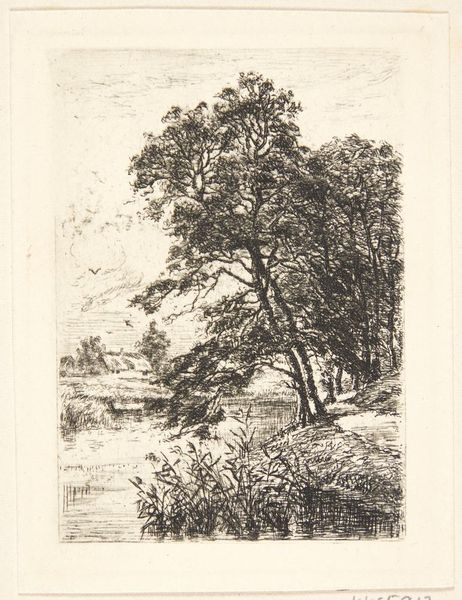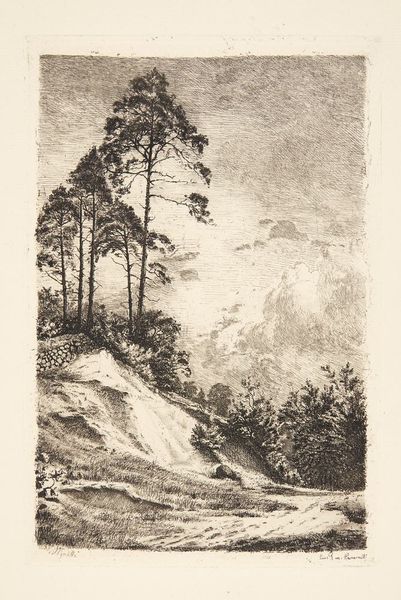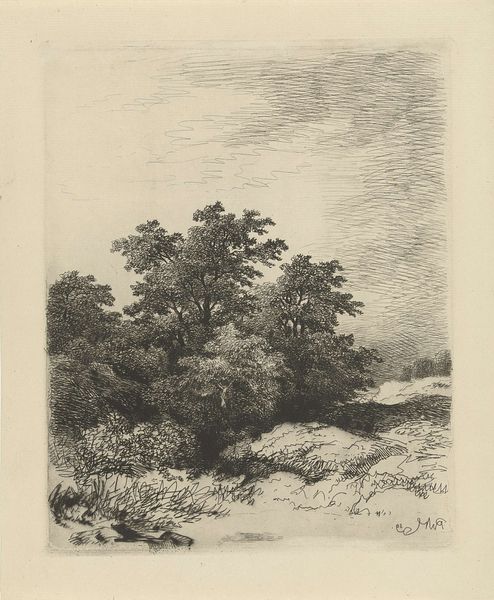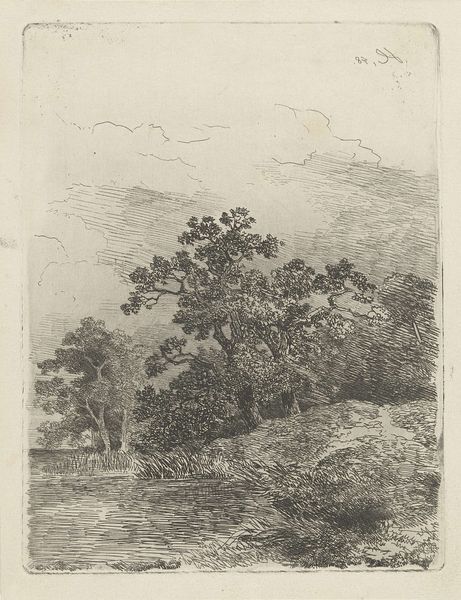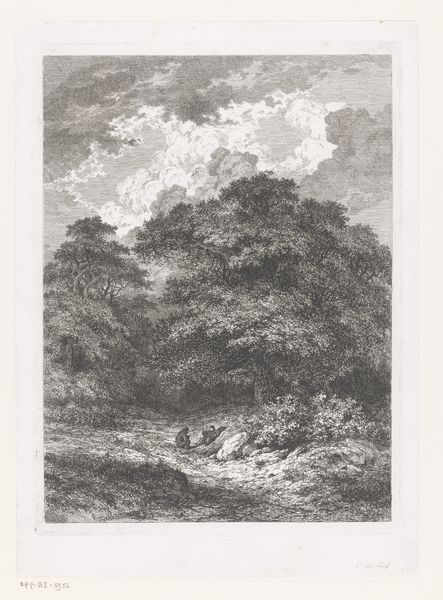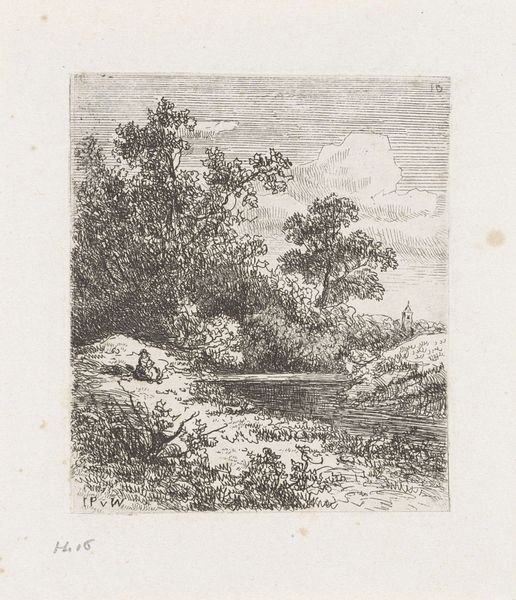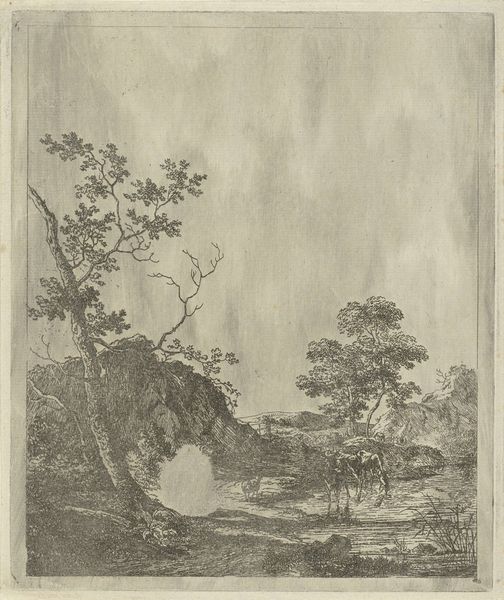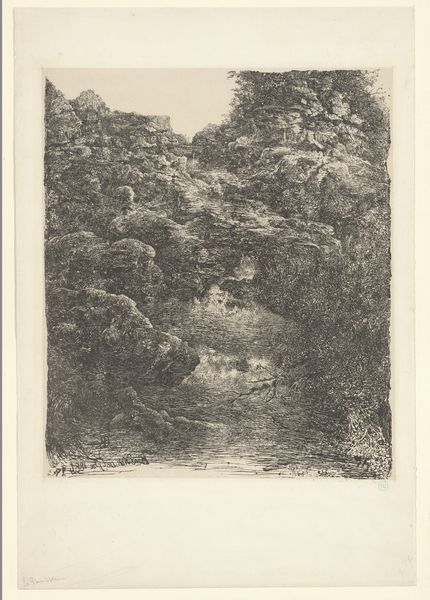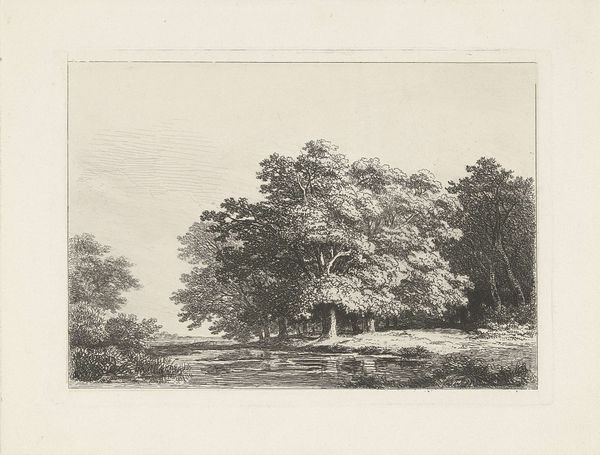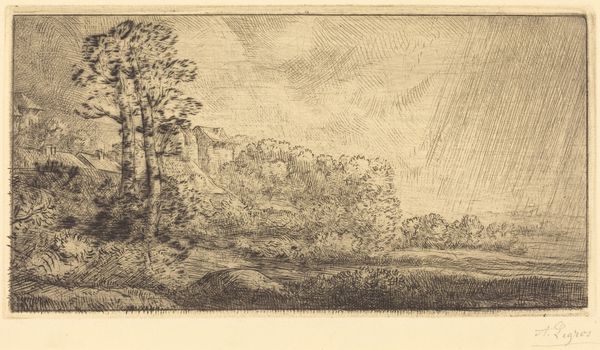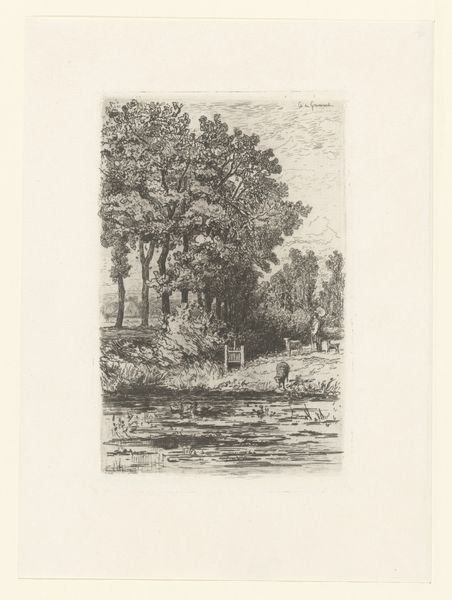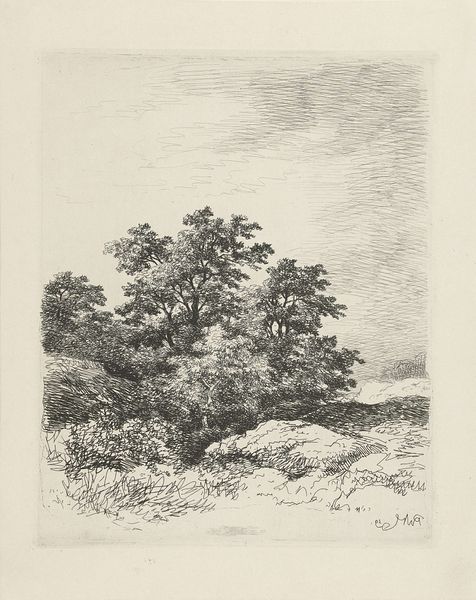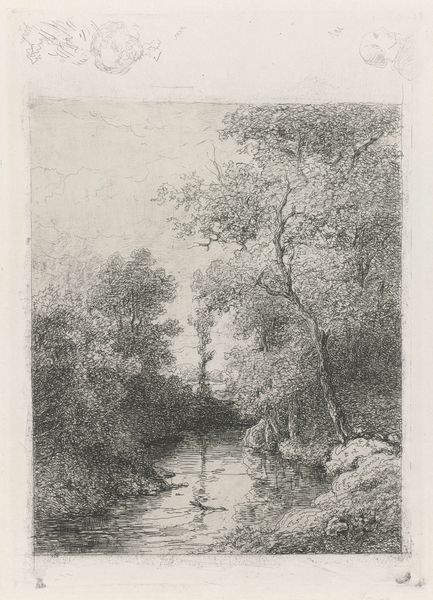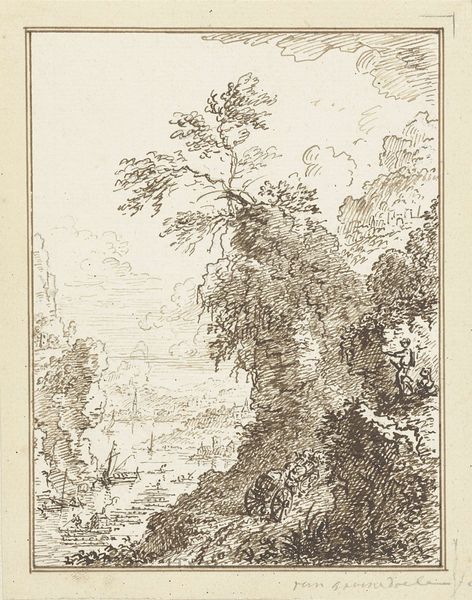
print, etching
#
pencil drawn
#
amateur sketch
#
natural shape and form
#
light pencil work
# print
#
etching
#
pencil sketch
#
charcoal drawing
#
pencil drawing
#
ink drawing experimentation
#
pen-ink sketch
#
pencil work
Dimensions: 220 mm (height) x 157 mm (width) (plademål)
Curator: This is Louise Ravn-Hansen’s “Sommerformiddag,” or “Summer Morning,” created around 1890. It’s an etching, currently held at the SMK, the National Gallery of Denmark. Editor: There's something inherently gentle about it, isn't there? The monochromatic palette and delicate linework create this very still, quiet mood. Curator: Indeed. The medium really lends itself to that effect. Hansen was part of a larger movement of artists who championed printmaking—etching, in particular—as a medium for original artistic expression, rather than mere reproduction. It was about labor, accessibility and moving away from elite consumption habits related to painting at the time. Editor: That contextual element, situating it within debates of artistic autonomy and democratizing access, is fascinating. It’s interesting to consider gender, too; did female artists gravitate towards etching as a way of participating in the art world in a way that was possibly more accessible or less policed? Curator: That's certainly one compelling interpretation. Printmaking had deep roots in craft traditions and guild structures. By elevating what some considered “mere craft,” artists could challenge the existing hierarchy of genres. I imagine the laborious process of etching also impacted the subjects she and other printmakers focused on. We see intimate domestic scenes, landscapes readily accessible in the areas around Copenhagen rather than dramatic or imposing natural formations, which would resonate well with an expanding middle class. Editor: You know, that labor element also prompts reflection on visibility itself. Hansen subtly reveals her process in "Sommerformiddag." The meticulous, almost painstaking etching—marks visible, foregrounded, part of the aesthetic. It highlights the act of making as central to meaning. Curator: It seems to reveal more than obscure, precisely. The conscious making visible of what it is. The artist is putting on display her knowledge of etching, which is the act of working to define the surface. You see both texture and depth at once. Editor: Yes, it resists being passively viewed. It seems to gently invite viewers to engage with how art is made and perhaps even by whom. Curator: Well, it seems a re-evaluation of the hierarchy of the artwork itself. Thank you, that’s really illuminated Hansen's methods for me today! Editor: Thank you, understanding those elements helps illuminate a potential, albeit gentle, undercurrent of activism within it all.
Comments
No comments
Be the first to comment and join the conversation on the ultimate creative platform.
